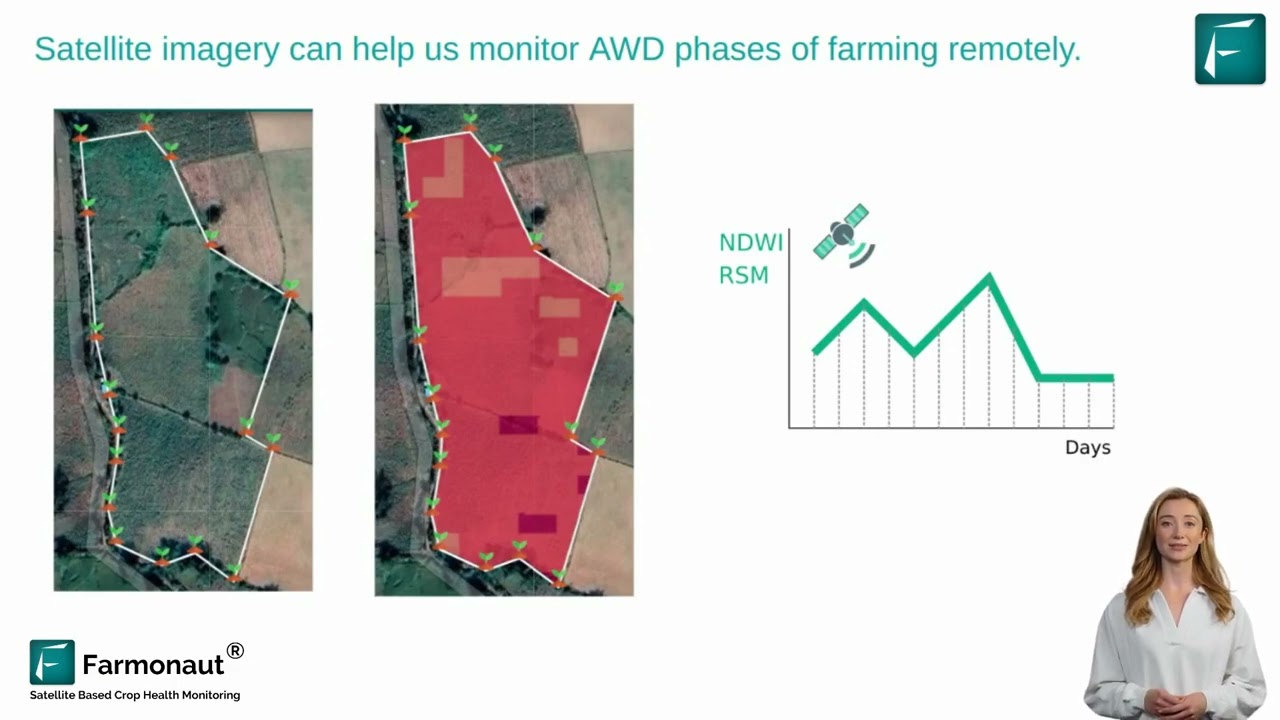The Hidden Cost of Mass Deportations: How Immigration Policies Impact US Food Prices and Economic Growth
“Alabama’s HB-56 immigration law led to a 6% drop in the state’s GDP, costing $2.3 billion annually.”
Tempe, Arizona, US – As we delve into the complex issue of immigration enforcement costs and US workforce shortages, it’s crucial to examine the potential impact of mass deportations on our nation’s economy, particularly in key sectors like agriculture, construction, and food services. In this comprehensive analysis, we’ll explore how proposed changes to US immigration policy could affect various industries and the national economy in unexpected ways.
The Current State of Immigration Enforcement
Since January 2025, the US Immigration and Customs Enforcement agency has reported detaining and planning to deport between 600 to 1,100 immigrants daily. This marks a significant increase from the average of 282 immigration arrests per day in September 2024 under the previous administration. At this rate, the current administration is on track to apprehend approximately 25,000 immigrants in its first month in office, with an annual projection of around 300,000 deportations.
However, this figure falls short of the “millions and millions” of deportations promised during the 2024 presidential campaign. The discrepancy can be attributed to various factors, including:
- Lack of funding
- Insufficient immigration officers
- Limited immigration detention centers
- Other resource constraints
To address these limitations, the administration is seeking $175 billion from Congress for immigration enforcement over the next four years. But what would be the true cost of implementing such a large-scale deportation plan?
The Economic Impact of Mass Deportations
Our research indicates that removing millions of immigrants from the US workforce would have far-reaching and costly consequences for everyone in the country, including American citizens and businesses.
1. Rising Food Costs
One of the most immediate and noticeable effects of mass deportations would be an increase in food prices. This is due to the significant role that undocumented immigrants play in the US agricultural sector.
- Approximately 50% of US farmworkers are living in the country without legal authorization
- Many of these workers are skilled supervisors or machine operators crucial to farm operations
- A sudden removal of this workforce would disrupt domestic food production
The consequences of this disruption would be felt throughout the food supply chain:
- Decreased domestic production of fruits and vegetables
- Higher costs for groceries and restaurant meals
- Increased reliance on food imports
2. Impact on the Construction Industry
The construction sector, which relies heavily on immigrant labor, would also face significant challenges:
- Nearly 25% of construction workers are living in the US without legal authorization
- These workers often possess specialized skills in areas like ceiling and flooring installation, roofing, and drywall work
- A shortage of skilled workers would slow down both residential and commercial construction projects
The ripple effects of this slowdown would include:
- Increased housing costs, exacerbating existing affordability issues
- Delays in commercial and public infrastructure projects
- Potential economic slowdown in related industries
3. Disruption in the Food Service Industry
The restaurant and food preparation sector would also be significantly impacted:
- 10-15% of workers in this industry are estimated to be undocumented immigrants
- Many of these workers fill crucial roles in food preparation and service
- Their sudden removal could lead to staff shortages and increased labor costs
These changes could result in:
- Higher menu prices at restaurants
- Reduced operating hours or even closures for some establishments
- A shift in the dining landscape, potentially favoring larger chains over small, independent restaurants

Lessons from State-Level Immigration Enforcement
To better understand the potential national impact of mass deportations, we can look at past state-level immigration enforcement policies. One notable example is Alabama’s HB-56 law, enacted in 2011.
The Case of Alabama’s HB-56
This law had several provisions:
- Required local police to investigate the immigration status of drivers stopped for speeding
- Prohibited landlords from renting properties to undocumented immigrants
- Led to workplace raids and the departure of many immigrant workers from the state
The economic consequences of HB-56 were significant:
- Estimated annual loss of $2.3 billion to $10.8 billion in Alabama’s GDP
- Reduced economic output due to loss of workers
- Disruptions in various industries, particularly agriculture and construction
This state-level example provides a glimpse into the potential national-scale impacts of mass deportations.
The Argument for Deportations: A Critical Examination
Proponents of mass deportations often argue that such actions would benefit the country by:
- Saving money on public services like education and healthcare
- Creating more job opportunities for American workers
- Enhancing national security
However, these arguments fail to consider several crucial factors:
1. Labor Shortages and Unfilled Jobs
Undocumented immigrants often fill labor gaps in industries where there is a shortage of willing American workers. These jobs are frequently:
- Low-paying
- Physically demanding
- Located in rural areas
Simply removing these workers doesn’t guarantee that American citizens will step in to fill these roles.
2. Economic Contributions of Immigrants
Contrary to popular belief, undocumented immigrants contribute significantly to the US economy:
- They pay more than $96 billion in federal, state, and local taxes annually
- Many use Individual Taxpayer Identification Numbers (ITINs) to pay income taxes
- They contribute to Social Security and Medicare through payroll taxes, often without being eligible for benefits
3. Limited Access to Public Benefits
Undocumented immigrants are ineligible for many public benefits, including:
- Social Security
- Medicare
- Supplemental Nutrition Assistance Program (SNAP)
- Most other federal safety net programs
This means that their tax contributions often outweigh the public services they receive.
“Undocumented immigrants contribute approximately $11.74 billion in state and local taxes each year in the US.”
The Hidden Costs of Mass Deportations
Beyond the direct economic impacts, mass deportations would incur significant hidden costs:
1. Enforcement and Logistical Costs
- Increased funding for immigration enforcement agencies
- Expansion of detention facilities
- Transportation costs for deportees
- Legal proceedings and administrative expenses
2. Economic Disruption
- Loss of consumer spending from deported individuals and their families
- Reduced economic activity in immigrant-heavy communities
- Potential closure of businesses reliant on immigrant labor or customers
3. Social and Community Impacts
- Separation of families, potentially leaving US-citizen children without parents
- Increased strain on social services to support affected families
- Potential increase in poverty and homelessness

The Role of Technology in Agriculture Amidst Labor Challenges
As the agricultural sector faces potential labor shortages due to immigration policies, technology is playing an increasingly important role in farm management and productivity. Companies like Farmonaut are at the forefront of this technological revolution in agriculture.
Farmonaut offers advanced, satellite-based farm management solutions that can help farmers optimize their operations in the face of potential labor shortages:
- Real-time crop health monitoring using satellite imagery
- AI-based advisory systems for optimized farm management
- Resource management tools to maximize efficiency
These technologies can help mitigate some of the challenges posed by workforce reductions, although they cannot fully replace the need for skilled agricultural workers.
Economic Impact of Mass Deportations Across Key Industries
| Industry | Current Undocumented Workforce (Est.) | Projected Labor Shortage | Estimated Cost Increase | Potential Economic Impact |
|---|---|---|---|---|
| Agriculture | 50% | Severe | 15-25% increase in food prices | $60 billion annual loss |
| Construction | 25% | Significant | 10-15% increase in construction costs | $30 billion annual loss |
| Food Services | 10-15% | Moderate | 5-10% increase in restaurant prices | $20 billion annual loss |
| Hospitality | 20% | Moderate to Severe | 8-12% increase in hotel rates | $25 billion annual loss |
The Broader Economic Implications
The effects of mass deportations would extend beyond specific industries, potentially impacting the entire US economy:
1. Reduced Consumer Spending
- Loss of immigrant consumers who contribute to local economies
- Reduced spending power in immigrant-heavy communities
- Potential ripple effects on retail and service industries
2. Impact on Housing Market
- Potential decrease in housing demand in certain areas
- Increased foreclosures if immigrant homeowners are deported
- Disruption in rental markets, particularly in urban areas
3. Effects on Social Security and Medicare
- Loss of contributions from undocumented workers who pay into these systems without receiving benefits
- Potential long-term funding challenges for these programs
Alternative Approaches to Immigration Policy
Given the potential economic risks of mass deportations, policymakers might consider alternative approaches to address immigration concerns:
1. Comprehensive Immigration Reform
- Creating pathways to legal status for undocumented workers
- Implementing more efficient visa programs for industries with labor shortages
- Enhancing border security measures
2. Targeted Enforcement
- Focusing deportation efforts on individuals with serious criminal records
- Implementing workplace enforcement that targets employers rather than workers
3. Integration Programs
- Investing in education and job training for immigrant communities
- Promoting language acquisition and cultural integration
The Role of Technology in Addressing Agricultural Challenges
As the agricultural sector faces potential labor shortages, technology can play a crucial role in maintaining productivity and efficiency. Farmonaut’s satellite-based farm management solutions offer innovative ways to optimize agricultural operations:
- Real-time crop health monitoring using NDVI (Normalized Difference Vegetation Index)
- AI-driven personalized farm advisory through the Jeevn AI system
- Resource management tools for efficient use of water, fertilizers, and pesticides
While these technologies cannot fully replace skilled agricultural workers, they can help farmers adapt to potential labor shortages by improving efficiency and decision-making.
Conclusion: The Complex Reality of Immigration and Economy
As we’ve explored throughout this analysis, the issue of mass deportations and their impact on the US economy is multifaceted and complex. While proponents argue for potential savings on public services, the reality is that undocumented immigrants contribute significantly to the US economy through taxes, labor, and consumer spending.
The hidden costs of mass deportations – including disruptions in key industries, increased food and housing prices, and potential economic slowdowns – could far outweigh any perceived benefits. As policymakers grapple with immigration reform, it’s crucial to consider these economic implications alongside security concerns and humanitarian factors.
Ultimately, finding a balanced approach that addresses immigration concerns while preserving economic stability will be key to ensuring a prosperous future for all residents of the United States.
Earn With Farmonaut: Affiliate Program
Earn 20% recurring commission with Farmonaut’s affiliate program by sharing your promo code and helping farmers save 10%. Onboard 10 Elite farmers monthly to earn a minimum of $148,000 annually—start now and grow your income!
FAQs
- How do undocumented immigrants contribute to the US economy?
Undocumented immigrants contribute through taxes, labor in key industries, and consumer spending. They pay over $96 billion in federal, state, and local taxes annually. - What industries would be most affected by mass deportations?
Agriculture, construction, food services, and hospitality would likely be the most impacted sectors due to their reliance on immigrant labor. - How might food prices be affected by mass deportations?
Food prices could increase by 15-25% due to labor shortages in agriculture and increased production costs. - What are some alternatives to mass deportations?
Alternatives include comprehensive immigration reform, targeted enforcement focusing on serious criminals, and integration programs for immigrant communities. - How can technology help address potential labor shortages in agriculture?
Technologies like Farmonaut’s satellite-based farm management solutions can help optimize operations, improve efficiency, and support decision-making in the face of potential labor shortages.




















